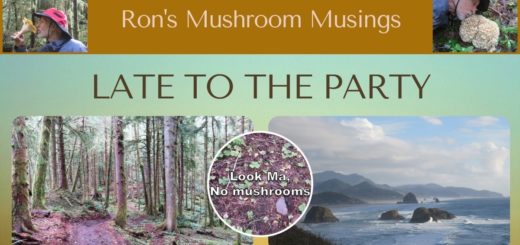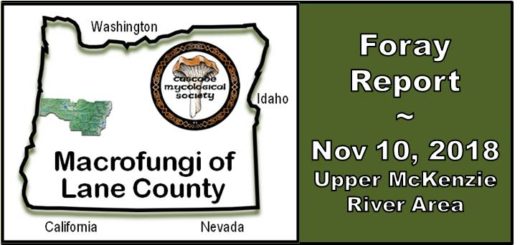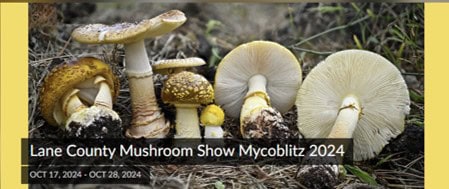Will this mushroom season be better than 2022?
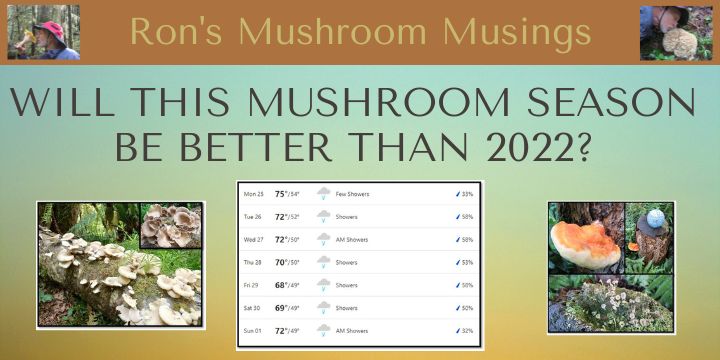
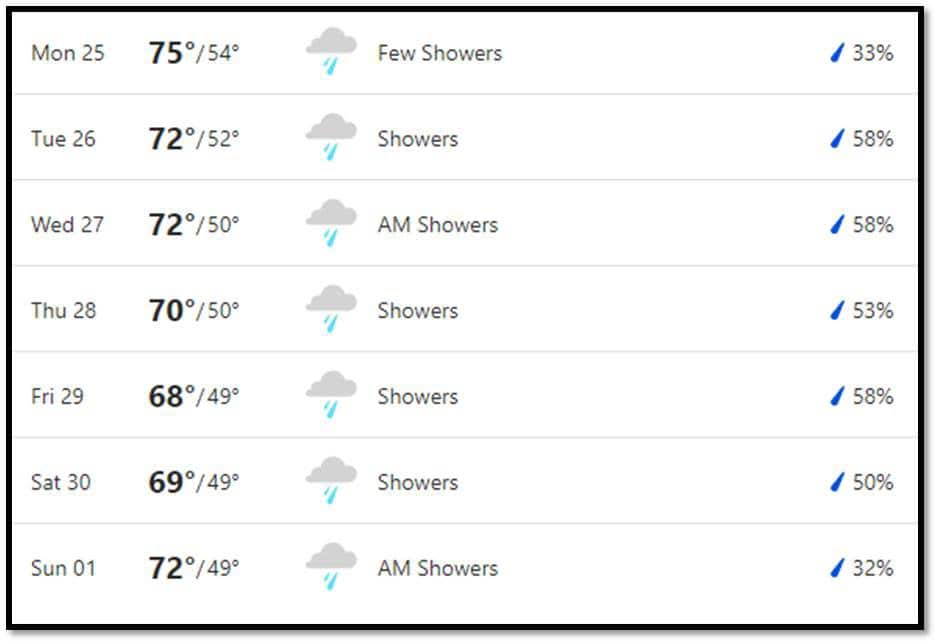
April showers bring May flowers but having plentiful late summer and fall showers brings out the mushrooms in great abundance. Last year’s September/October rainfall was nothing short of terrible and subsequently so was the mushroom season here in Oregon. Will this year be different? Well, I’ve never been a follower of long-term weather prognosticators as I’ve found our short-term ones to be quite fallible. As a former co-worker of mine would always say; predictive modeling is only an abstraction of reality. Prediction is exactly that, a best guess based on a host of other guesses. That said, a quick look at the weather being guessed at for the end of September is certainly encouraging. However, I would not recommend rushing out and purchasing stock in umbrella companies or galoshes manufacturers because this forecast may be wrong and most Oregonians don’t use these items anyway. Some weather prognosticators are predicting the Northwest to have a very strong El Niño event, which is expected to maintain warmer fall and winter temperatures but increased rainfall. NOAA’s U.S. Climate Outlook published on September 1, 2023 predicts “above-normal precipitation is favored across the Pacific Northwest” for the month of September. Beyond that, your guess is as good as theirs.
You may be wondering just how I came to know about all this speculative weather information; well, I just Googled it. Yes, it’s my default browser although I could have used Bing, Yahoo, Yandex, DuckDuckGo, Baidu, Ask.com or Naver. But even though the company that owns Google may be a bad actor in some ways, Googling works for me and it’s somewhat trendy to associate with a few companies that have seemingly low morals. It helps make those with slightly higher moral standards look that much better.
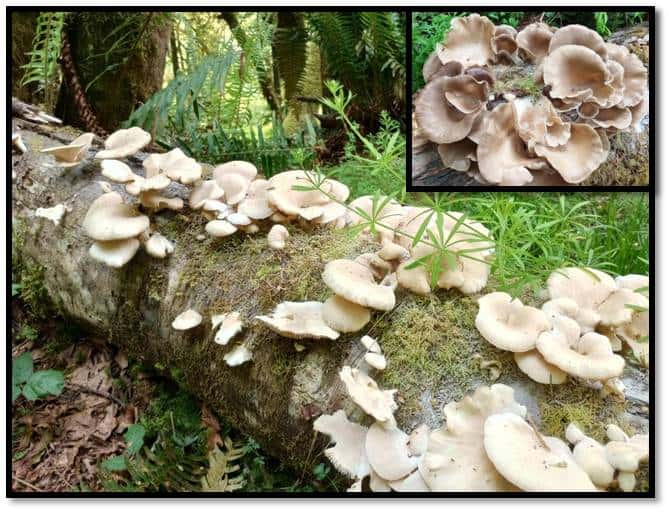
As for Sandy and I, we took a very relaxing trip in early May to the town of Silverdale, which is located on the Kitsap Peninsula in Washington. The Tacoma Narrows Bridge crosses over the water of the Puget Sound and gets you from the city of Tacoma onto the Kitsap Peninsula. Silverdale is an unincorporated town with a very large commercial district hosting all the big box stores. As shopping was not one of our priorities, we focused on hiking and visiting the lesser visited areas on the peninsula. One of our more memorable hikes was near the former mill town of Seabeck, which currently has a population of 860 hardy souls. While hiking on a very nicely maintained trail, we noticed quite a few Alder logs and stumps that had accumulated over the years. And, so as not to let a perfectly good source of carbohydrates go to waste, a benevolent fungus stepped up to recycle them back to nature. Fruiting on these and lots of other pieces of Alder wood was the oyster mushroom known as Pleurotus pulmonarius. This particular species of oyster mushroom is found growing in the spring in the Pacific Northwest and we found lots of it. Fortunately, a couple of benevolent hikers stepped up to recycle them back to nature in their own special way. We also found other interesting mushrooms during our exploits but nothing compared to the massive amounts of oyster mushrooms we saw along our hikes.
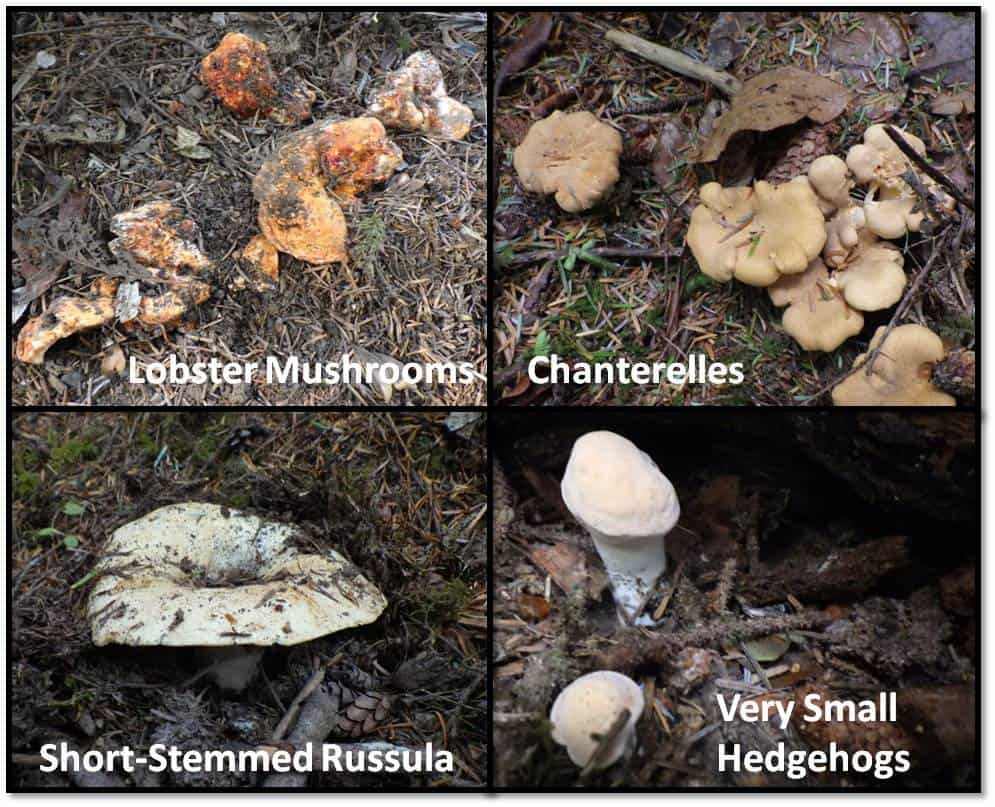
In our neck of the woods, mushroom hunting is quite a bit more challenging this time of the year. That doesn’t mean there are no opportunities to find them but it is truly a hunt rather than just gathering them up. Several days prior to publishing this newsletter, we went out looking for some of the “first to arrive” mushroom species. These are ones that will fruit early even if the conditions are not quite optimal. First among them to fruit is the Short-Stemmed Russula (Russula Brevipes). While not generally picked, it is similar in flavor to another early riser, the Lobster Mushroom (Hypomyces lactifluorum). As this species of parasitic fungus uses the Short-Stemmed Russula as its host, they are both available for harvesting during the same time period. Both of these mushrooms can be found fairly easily starting as early as late August and only require a minimal amount of moisture in the soil to encourage fruiting. Chanterelles are a little more particular and need a little more moisture to coax them into fruiting. However, coastal areas that receive regular moisture from fog and/or drizzle are your most likely places to find them. You can find Chanterelles fruiting in small patches and singly scattered in these fog/drizzle prone areas of the coast. We were very surprised to find a few small Hedgehogs (Hydnum repandum) as they generally start a little later but can continue developing in size for weeks or more. As I’ve stated in previous articles, places like Astoria and those further north on the coast can receive more moisture than the central and southern coastal areas. That said, localized rain and thick fog events can happen just about anywhere and it pays to keep an eye on where and when they occur.
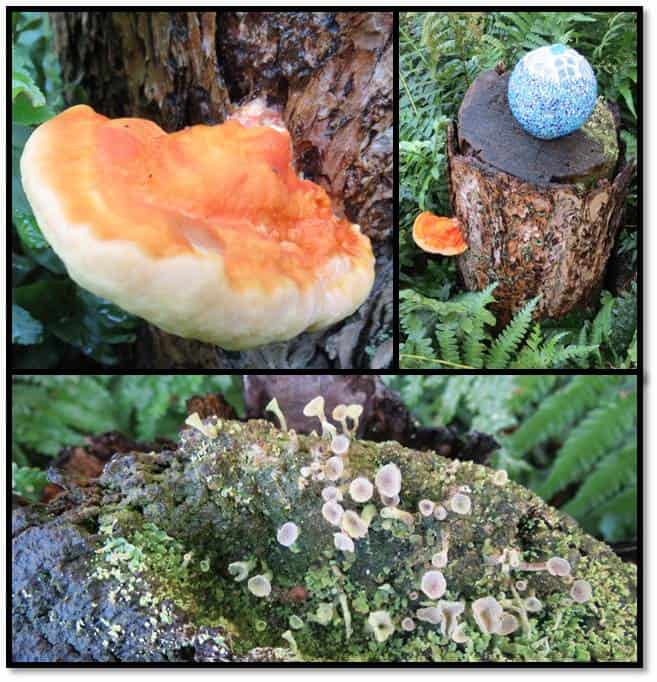
Back at the homefront, we were astounded to see a Douglas Fir log we had inoculated with Chicken of the Woods (Laetiporus conifericola) 7-years earlier fruiting for the first time. This once clean piece of wood was now old enough to have formed a colony of Lichen on it as well as other life forms. In fact, it was inoculated long enough ago that we had forgotten that a host fungus had even been introduced into the log, which is now mostly covered by fern fronds. We were amazed and pleased to see this happen so much so that we couldn’t bring ourselves to harvest it. I can only wonder what next year will bring to this log. Will it continue to fruit or was this a one trick pony? I could prognosticate but we all know how I feel about prognosticators and besides wouldn’t that make me a hypocrite if I did?
Take care and keep an eye on the sky. When raindrops fall, mushrooms rise. – Ron

